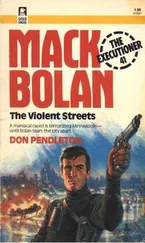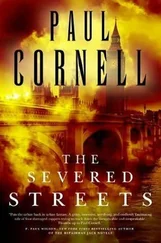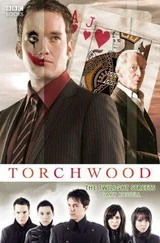The man of the hour, Robert Frazier, is already inside the courtroom and behind the defense table, sitting next to his lawyer with a hardbound copy of the New Testament in front of him, a cardboard marker pressed inside the Book of Luke. Frazier is wearing a well-tailored dark suit and a crisp white shirt, but somehow there’s no mistaking his line of work. Just before the jury files in, Frazier stretches his tall frame, pushes his chair back and yawns like a man at ease in courtrooms. He turns to look at the members of the Lucas family in the back row, stares for a moment, then turns away.
The motions hearings were yesterday morning, with Doan successfully fighting off some routine efforts by Paul Polansky, who tried to have the identification of his client by Romaine Jackson-the young girl who saw Frazier enter Lena’s building from her third-floor window-ruled inadmissible. Polansky argued that Frazier’s photo had been given greater prominence in the photo array shown to the girl because it was in the upper left corner and because the other men seemed younger and less thin. Gordy denied the motion, as well as one that challenged a search warrant that Garvey and Donald Kincaid had written for Frazier’s Chrysler after the arrest. Live.38 ammunition had been found in the trunk.
The rest of the day was spent on the selection of a jury-voir dire-the elaborate process by which potential jurors are screened for bias by the court. Voir dire is, in itself, an essential part of the trial strategy, with prosecutors using their limited number of “strikes” to keep out those potential jurors who have been beaten by police, have relatives in the prison system, or generally regard the criminal courts of the United States as a sham perpetrated by running dog capitalist jackals. At the same time, the defense attorney endeavors to use his strikes to remove all who are related to a law enforcement officer, who were ever the victims of a crime, or who truly believe that if the man seated at the defense table is accused of the crime, he must be guilty. Because the population of Baltimore generally holds membership in one or more categories, voir dire in the Lucas case took quite a while-at least until the lawyers exhausted the allowable strikes.
From his seat at the trial table, Doan now watches the product of yesterday’s effort walk in from the jury room. A typical Baltimore jury-predominantly black, predominantly female. Polansky didn’t exactly go out of his way to find white jurors willing to sit in judgment on his black client; nor, for that matter, did Larry Doan strike any white strays from the jury box. Still, watching the jurors file in, Doan is generally satisfied. Most are working people, but with the sole exception of the girl in the front row, all seem sharp and attentive, which matters for a case such as this one. The girl in the front row, however, is trouble. Doan watches her slump into her seat, arms crossed, staring at the floor. She’s bored already; God knows what she’ll be like after four days of testimony.
Judge Clifton Gordy calls the court to order and begins his preamble, explaining the legal arena to the jurors. Tall, quiet, serious, Gordy cuts quite a figure on the bench. His language is precise, his humor is sharp, and his manner often seems, to lawyers at least, well suited to tyranny. Attorneys who fail to rise when stating their objections in Gordy’s court generally find themselves ignored. Gordy knows his law and he knows his lawyers; Doan, for example, worked for Gordy when the judge was heading the trial division. One other thing about the judge suits Doan in this case: Cliff Gordy is black, and that takes some of the edge off the fact that two white Jewish guys will be arguing the question of a black man’s freedom. It will certainly help the black jurors to believe that the criminal justice system actually represents them.
As Gordy finishes his introduction and Doan rises to begin his opening, Garvey sits in the anteroom, struggling with the morning Sun crossword.
“British gun,” says Garvey. “Four letters.”
“S-T-E-N,” says Dave Brown from the other end of the bench, where he waits in case the trial testimony turns to the Purnell Booker case. “A British gun is always Sten in crosswords.”
“You’re right,” says Garvey.
Lost to them is Doan’s greeting to the jury, his warning that this is a murder case, a nasty, ugly, gruesome murder case that involves the willful taking of human life. That accomplished, Doan begins the long, labored process by which jurors are shorn of preconceptions.
“This is not television,” he assures the jury. “Unlike TV shows, motive is not an element of the crime of first-degree murder. You don’t know exactly why it happened. It’s something you would like to know, it’s something the person trying the case would like to know, but it’s not necessary to know it to prove the crime.”
And then, following a standard script, Doan pulls out the jigsaw puzzle, the courtroom metaphor used by nearly every American prosecutor to earn his pay. You see, Doan tells the jury, this case is like a jigsaw puzzle. And like a puzzle that’s been around the house for a while, some of the pieces might be missing. “But, ladies and gentlemen, even with the missing pieces, when you assemble that jigsaw puzzle, you can still determine what the puzzle is about and what it shows.”
Doan launches into the story of Charlene Lucas. He touches all of the essentials: her relationship with Robert Frazier, her involvement in drugs, the crime scene itself and the investigation that followed. Doan tells the jurors about Romaine Jackson, who identified Frazier as the man who came home with Lena the night of the murder; he talks about Frazier’s initial interview with Garvey in which the defendant offered an alibi and promised to come in with his own.38; he tells them about Sharon Denise Henson, “Nee-Cee,” who failed to corroborate Frazier’s alibi. He tells them about the nested clothes and the victim’s nudity and the lack of forced entry-indications that Lena was murdered by someone she knew intimately.
“Give Mr. Frazier his fair day in court,” Doan tells the jury. “Give him his trial and give Charlene Lucas her fair day in court and her family, who are here today, their day in court. And after you put it all together and you finish the puzzle, you are going to see a picture and that picture is going to be the defendant killing Charlene Lucas. Thank you.”
The prosecutor does not mention the murder of Purnell Booker and that the ballistics report links that murder to the Lucas killing. He does not mention Vincent Booker, who admitted to supplying Frazier with.38 wadcutter reloads before both murders and told the detectives that his father was killed for taking Frazier’s drugs. By the court’s ruling on a pretrial motion, the Booker murder is prejudicial and not to be mentioned in the jury’s presence-a ruling that appeals to both attorneys. Because just as Doan knows that Vincent Booker is a risk, so does Polansky. A good lawyer never asks any question without knowing the answer, and with Vincent Booker, Polansky can’t be sure what the answers might be. As Frazier’s attorney, he needs to raise the specter of Vincent Booker just enough to suggest an alternate suspect to the jury. But he, too, has decided not to risk calling Booker as a court witness. Loose cannons roll both ways.
During his opening, Polansky assures the jurors that Robert Frazier “has been fighting in the Baltimore City Jail for the last eight months to come here and tell you his story of Lena’s death, to tell you that because of perhaps a poorly run police investigation they have the wrong man, to tell you that he is in no way, no shape, no form, guilty of this crime.”
My client is not a saint, Polansky tells the jury. Drugs? Yes, he sold drugs. A.38-caliber handgun. Yes, he had a gun. You will hear good things and bad things about Robert Frazier, Polansky declares, but does any of that make him guilty of the murder?
Читать дальше












